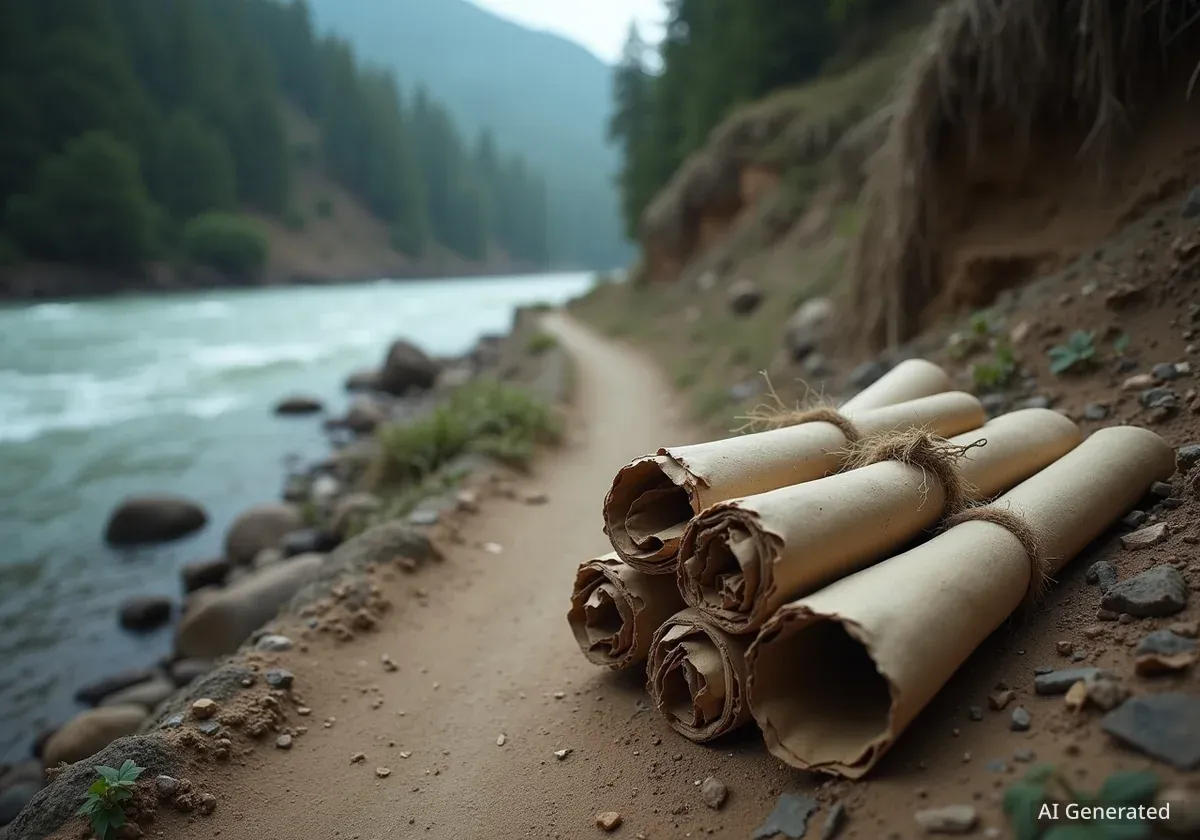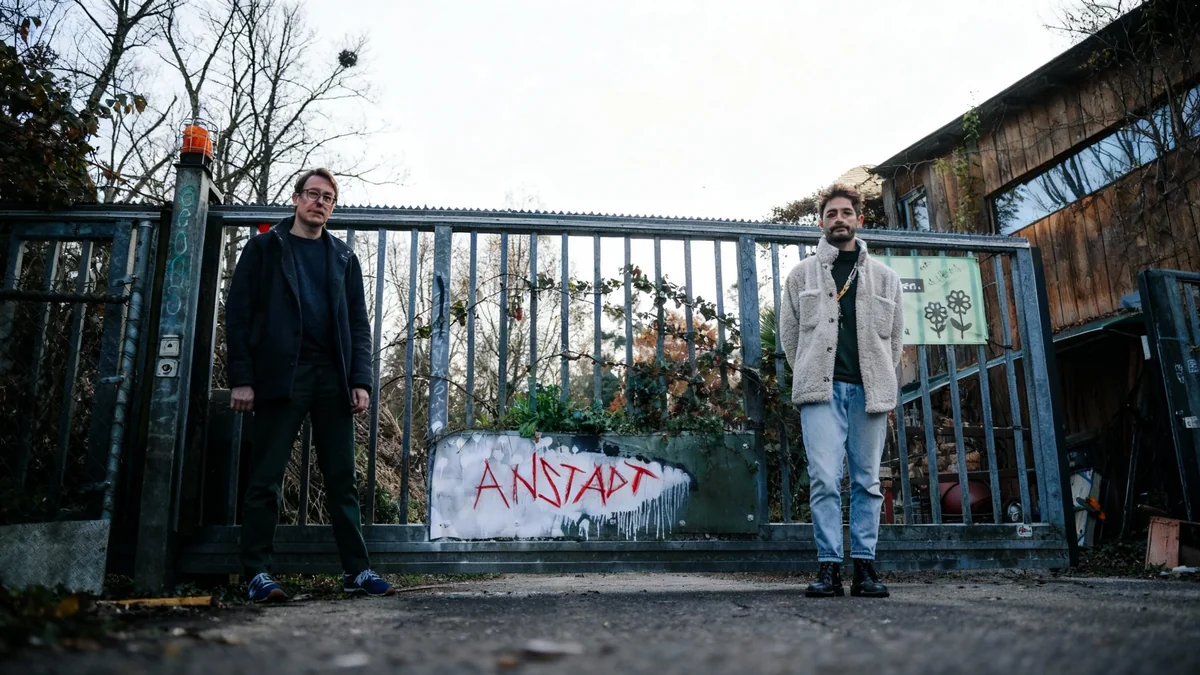A popular 700-meter footpath along the Aare river in Muri, Switzerland, has become the center of a heated political and environmental debate. After erosion from the river forced its closure, a local petition to save the path is clashing with cantonal and federal conservation laws, drawing in high-level officials and dividing the community.
The informal trail, used for decades by swimmers and walkers traveling between the Muribad and the Auguetbrücke bridge, was officially closed by the municipality due to safety concerns. Heavy summer rains have since made the path completely impassable, forcing residents to use an alternative gravel route and sparking a significant local controversy.
Key Takeaways
- A 700-meter riverside footpath in Muri has been closed due to severe erosion by the Aare river.
- A petition to save the path, initiated by politician Julien Reich, has gathered approximately 3,000 signatures.
- The path is located in a federally protected floodplain, where construction is heavily restricted by the cantonal water management plan.
- Muri's municipal council states it has no legal authority to intervene, while cantonal officials suggest any action would require federal approval.
- The dispute highlights a conflict between local recreational use, environmental policy, and political tensions.
Path Closure Sparks Community Outcry
For many years, the path served as a vital link in a local recreational area. Its closure before the summer season shocked many residents who relied on it for access to the Aare. The situation worsened following heavy rainfall in July, which washed away further sections of the trail, leaving it unusable.
In response to the closure, Julien Reich of the Young Liberals launched a petition demanding immediate measures to secure the path for the long term. The initiative quickly gained traction, collecting an initial 1,500 signatures and later growing to around 3,000, which Reich describes as a "strong signal from the population."
The public's concern has been amplified through numerous articles and letters in local news outlets, reflecting the path's importance to the community. However, the path forward is complicated by a web of environmental regulations.
Legal and Environmental Constraints
The core of the conflict lies in the path's location. It runs through a floodplain designated as an area of national importance, subject to strict protection rules. According to Gabriele Siegenthaler Muinde, the Muri-Gümligen municipal councilor for environment and energy, these regulations are binding.
"Muri-Gümligen agreed to the cantonal water management plan thirteen years ago," Siegenthaler Muinde stated. She explained that this plan explicitly allows for the natural dynamics of the river to shape the landscape, which includes erosion. "The plan is for a floodplain area to develop here," she added, emphasizing that the municipality's hands are legally tied.
Understanding the Water Management Plan
The cantonal water management plan (Wasserbauplan), approved in 2012, aims to restore natural river processes and enhance biodiversity in designated zones like the Haldenau floodplain. A key objective is to let rivers like the Aare reshape their banks naturally, which often conflicts with maintaining fixed infrastructure like paths or walls.
Siegenthaler Muinde also pointed out that the footpath itself has no official protected status. A 2012 cantonal memo about the plan only mentioned that the riverbank should remain accessible, but specified the path would only be "still walkable," implying no guarantee of preservation.
Political Tensions Rise
The debate has evolved into a political standoff. Christoph Neuhaus, President of the Cantonal Government, has suggested the issue is being used for political gain. At a public information event, he commented on the escalating rhetoric.
"I am slowly getting the feeling that Mr. Reich is politicizing mercilessly to take the municipal council to task," Neuhaus said, accusing the petitioner of using the footpath as a tool in local politics.
Reich denies these claims, arguing the broad support for his petition demonstrates genuine public concern. He and other supporters, including an interest group formed with geologist Ueli Gruner, lawyer Thomas Helbling, and former editor Peter Ziegler, believe the authorities misjudged the Aare's erosive power.
"If we don't act now, the interventions in nature and the financial consequences will be disproportionately greater later," Reich argued. The group is calling for a halt to the current water management plan, claiming it will lead to irreversible damage to the floodplain's flora and fauna.
Exploring Potential Solutions
Advocates for the path criticize the government for not considering less invasive stabilization methods. Reich suggested that "soft measures," such as placing large rootstocks near the bank, could help reduce erosion without requiring massive construction.
However, officials maintain that any intervention would be significant. "If you want to preserve the footpath in the medium to long term, it will probably require massive structural measures," said Siegenthaler Muinde, reiterating that even small actions are incompatible with the existing plan.
Key Figures in the Debate
- Julien Reich (Young Liberals): Leads the petition with 3,000 signatures to save the path.
- Gabriele Siegenthaler Muinde (Forum): Muri councilor, argues that legal plans prevent intervention.
- Christoph Neuhaus (SVP): Cantonal President, suggests the issue is politicized and federal approval is needed for any construction.
Next Steps and Federal Hurdles
The Muri municipal parliament is scheduled to discuss the petition on October 21. The outcome remains uncertain, given the limited power of the local government in this matter.
Christoph Neuhaus clarified the canton's position, stating that while officials are not fundamentally opposed to measures, the process is complex. "The municipality agreed to the master plans, and they are binding," he explained. "We can build, but we need a permit for that."
According to Neuhaus, the responsibility lies with the municipality to seek this approval. Any proposal to build protective structures would need to be submitted to the Federal Office for the Environment for authorization, a process with no guaranteed outcome. This places the future of the beloved footpath in a state of legal and political uncertainty.




